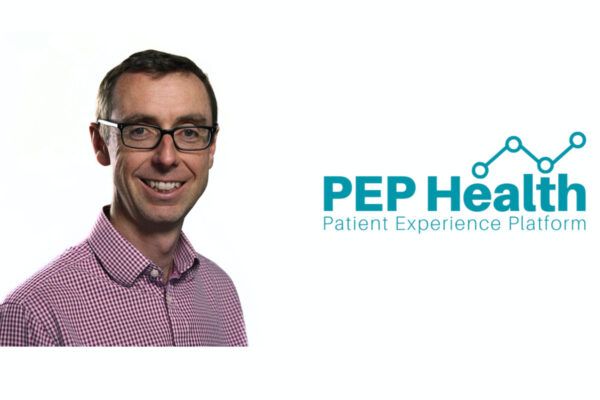COVID-19: An innovator’s perspective

Mark Lomax, PEP Health (NIA 2020)
This blog was originally published as part of the AHSN Network‘s COVID-19 Lessons blog series on 21 September 2020.
Mark Lomax is an NHS Innovation Accelerator (NIA) Fellow and CEO of PEP Health, a platform that analyses real-world, real-time patient feedback. Here he reflects on the spike in NHS patient satisfaction seen during the COVID-19 pandemic, asking ‘will it last?’
Patient Experience at an all-time high
Recent patient experience data collected during the COVID-19 pandemic shows a significant upturn in patients’ positive responses across all parts of the country. It is perhaps of little surprise that during this difficult time appreciation of NHS services is at an all-time high. Yet, we must wonder if the improvement in patient satisfaction can last. Maybe not, but we must try.
At PEP Health (Patient Experience Platform) we have been collecting, measuring and analysing the trends in patient satisfaction since 2017 and especially during the past few months, arguably some of the most trying in NHS history. PEP Health is a social media listening tool, which offers a radical new approach to collecting and analysing the views of patients on the health services they have received, offering comprehensive real-time reporting of what patients really think about their care. Every hospital in the UK is currently tracked remotely.
Collecting patient data, especially during the pandemic, is critical because it provides a real-time insight, at scale, as to what is happening with the ultimate users of the NHS, the patients. Clearly it is an important marker for quality and, at provider level, can help flag those providing outstanding care as well as those who are struggling. As all hospitals can be benchmarked it enables a direct comparison, helping to identify those who are truly delivering excellent care as well as helping to identify those who may need some greater operational support. Furthermore, as all comments are themed we can also quickly identify the why as well as the what. For instance, themes such as ability to access services quickly, receiving effective care, receiving clear information are all essential in the current climate.
In addition, for staff who may well be fatigued and drained it provides a morale boosting lift and demonstrates that what they do is recognised and appreciated by those they treat. We also see that patients themselves are very good at identifying many safety issues that can crop up and so we can learn from them as well as being motivated.
Variation however persists
While we saw an upturn in patient satisfaction across all regions, there was significant variation. The North East and South West fare consistently well. Arguably, this may be because of fewer organisations with greater staff retention that over time leads to a better patient experience. Relatively to other regions, the South East and the North West appear to have improved their ratings more than others. London, especially North London, performs poorly. Issues such as staff vacancies and retention and a mobile and diverse population will probably contribute to this lower experience, but what else is causing such a significant result? Were patients to realise that the variation of their care is so different around the country how would this effect their view and usage of health services? And what can we learn and share from the areas of best practice so that all patients can benefit?
Now, as waiting lists grow, diagnoses get delayed and patients’ frustrations increase accordingly, we anticipate seeing a fall in patient experience in the months and years ahead. In this dynamic and evolving situation, it has never been more important to listen and understand what patients really think about their care. Patient choice has long been promoted but has only modestly been adopted- maybe the time has come for patients to exercise some genuine patient choice.[rd_line type=”rd_line_bold” color=”#c9f0ff” use_icon=”yes” icon_color=”#c9f0ff” icon_size=”75″ icon=”imf-quotes-left”]
In this dynamic and evolving situation, it has never been more important to listen and understand what patients really think about their care.
[rd_line type=”rd_line_bold” color=”#c9f0ff” use_icon=”yes” icon_color=”#c9f0ff” icon_size=”75″ icon_pos=”right” icon=”imf-quotes-right”]The Role of Patient Experience looking ahead
I believe the insights we gain are particularly useful in the current climate, as feedback will help us support the reset following COVID-19 through improving services and patient safety.
As the NHS works to recover from COVID-19, real-time patient insights are invaluable. For the first time we can track and monitor services uniformly and at scale. We can compare current patient experience during the reset period with pre-COVID activity and, we can drill into the themes and issues to understand variation. For essential services, like oncology and maternity, we can understand the patient voice more clearly than ever.
This autumn, PEP Health will be publishing and sharing a State of the Nation Report detailing a raft of insights and analysis about the quality of patient experience across the country.
If you would like more information about your region or hospital and to ensure your patients’ views on their experience are available to help you with planning and operating your services, visit www.pephealth.ai or email enquiries@pephealth.ai